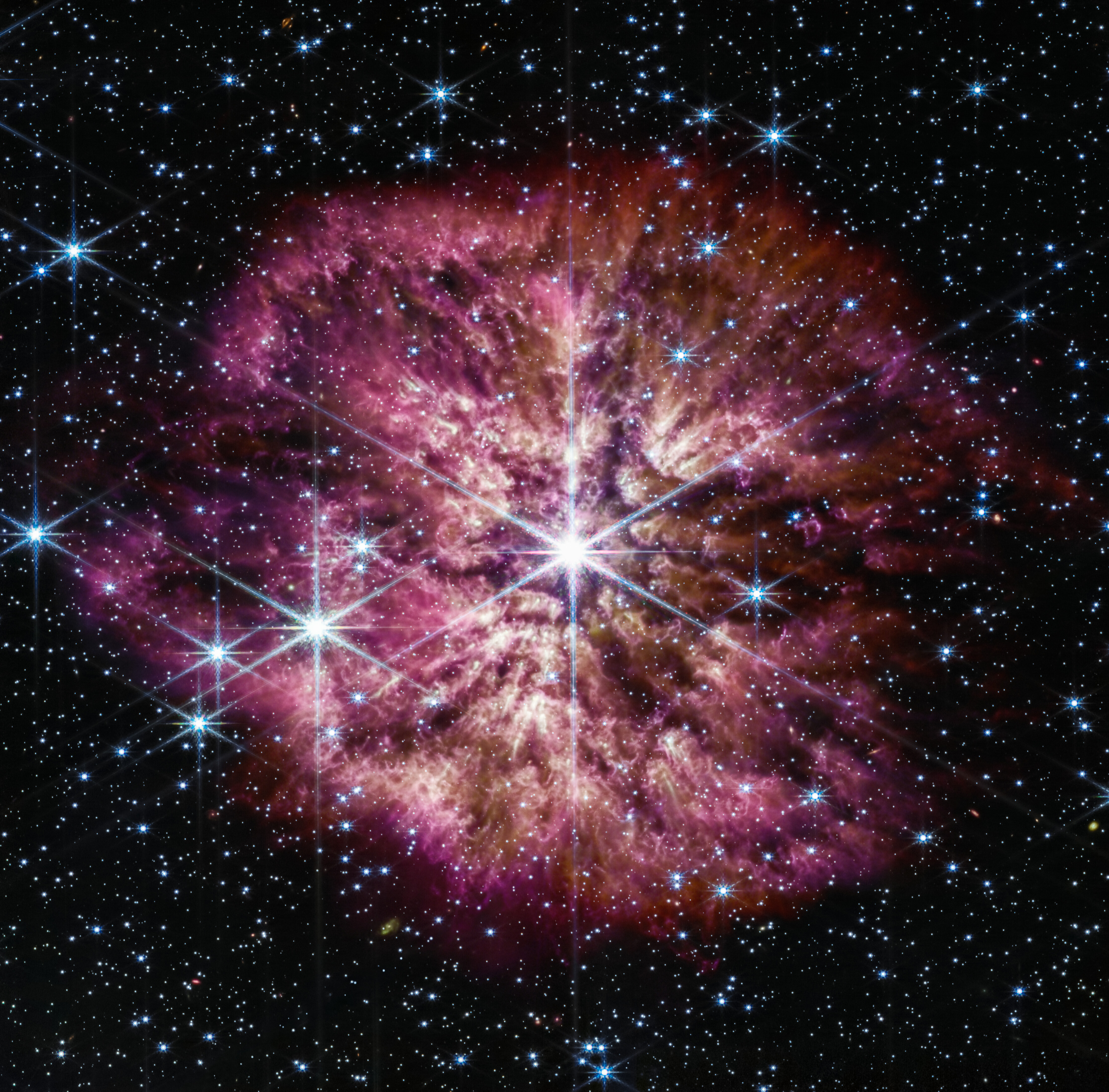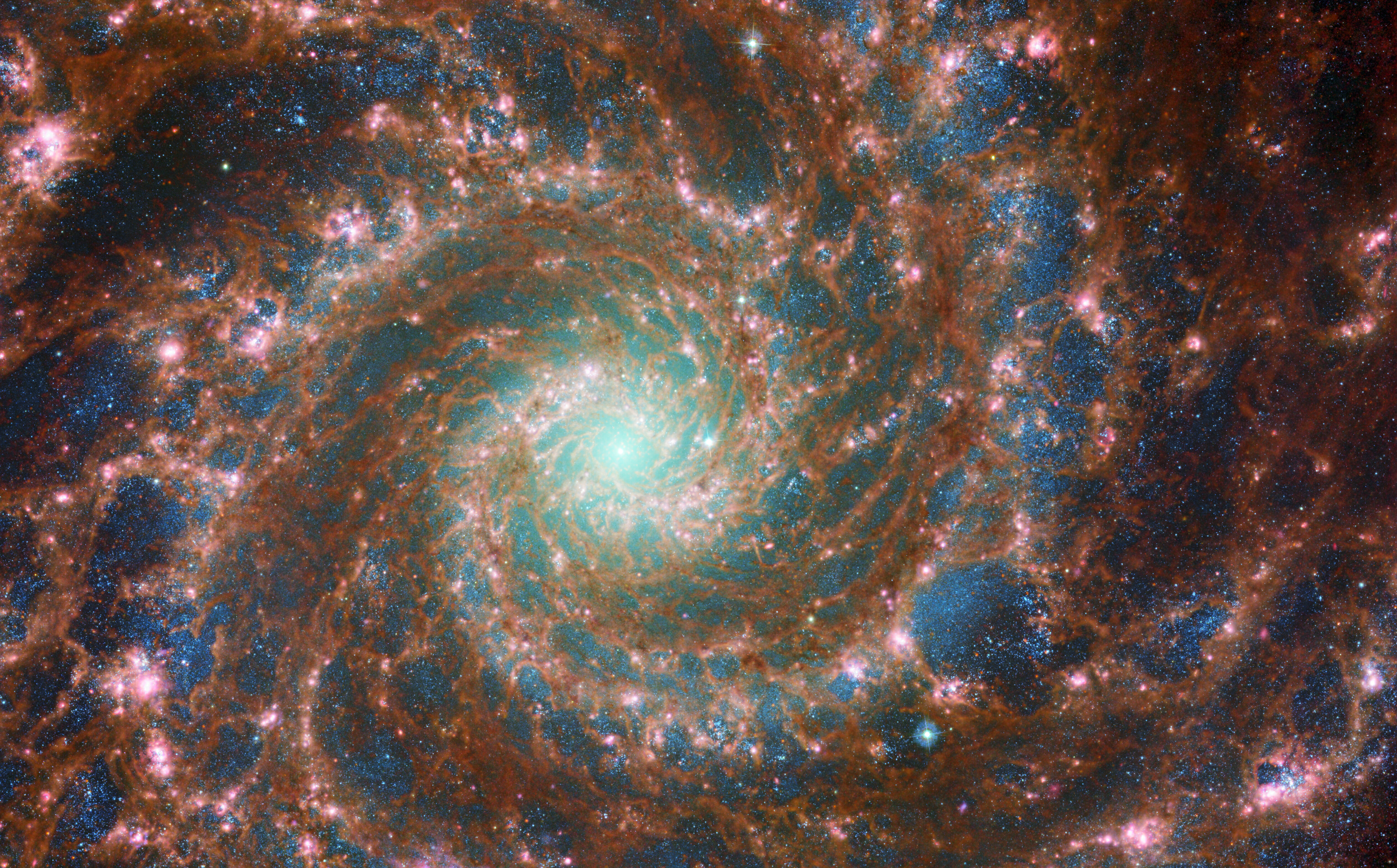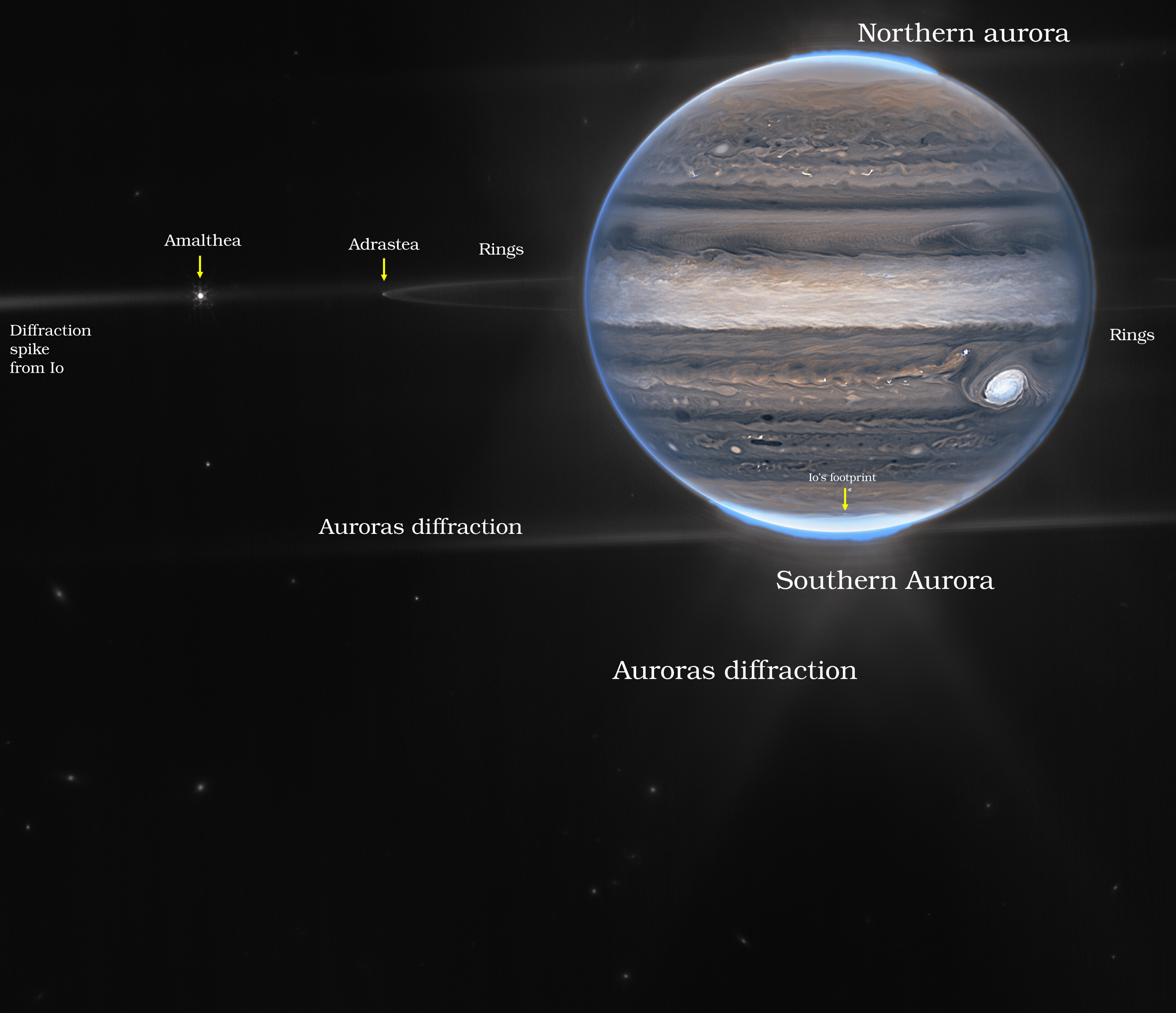The James Webb Space Telescope reveals the cosmos like never before
09 June 2023
The James Webb Space Telescope – or Webb for short – is a high-tech observatory in space! Webb launched into orbit at the end of 2021, and now observes the universe in infrared light from its new home almost 1.5 million kilometres away from Earth. This allows Webb to see details that are impossible to spot with our own eyes when using regular telescopes on Earth. Built and operated by NASA, ESA, and the Canadian Space Agency, Webb is helping us to answer lots of questions we have about the cosmos.
Webb's latest discovery!
Webb’s latest discovery has astounded scientists! Webb was observing Comet 238P/Read, an object orbiting within the main asteroid belt between Mars and Jupiter, and detected something very special in the comet’s signature - water vapour!
The water inside the comet would have formed a long, long time ago, when our Solar System was very young, and has been preserved in the comet for thousands of years. Frozen material in a comet vaporises when the comet approaches the Sun, and this gives them their distinctive coma, the diffuse cloud of dust and gas that surrounds him, and streaming tail.
Why is this special? Scientists have long thought that water ice could be found in the main asteroid belt, but clear proof was missing until Webb’s recent discovery. Comet Read can help us to understand how water is spread around our own solar system and learn more about how Earth became the water filled world it is today. We can then use this knowledge to investigate whether new Earth-like planets could develop in other planetary systems.
This is very exciting, but something has scientists puzzled: comets with water are expected to have carbon dioxide too, but none was found on Comet Read! The reason for this is now a new mystery that could be solved with more observations of the main-belt comets.
This latest discovery builds on Webb’s success producing fabulous images with fascinating science. Here are some more Webb success stories!
Cosmic Cliffs in Carina
This astounding view shows the edge of the Carina Nebula, 7600 light-years from Earth. It is a gigantic cloud of gas and dust where baby stars are forming. Can you see the light-blue “steam” rising from the orange tinted nebula? This is actually hot gas and dust being swept away from the nebula by the strong radiation released from the young stars.
The Pillars of Creation
This striking image shows another area of the cosmos where new stars are created. These new stars are sending jets into the surrounding gas and dust, which creates the vibrant crimson lava-like features at the edge of the nebula’s pillars. By studying images like this, astronomers learn more about how stars are formed.
The Rings of Uranus
Saturn is famous for its rings, but did you know that all the gas giants in our Solar System have ring systems? This Webb photo of Uranus shows many rings around the planet. There are also bright patches revealing clouds linked to the stormy weather in Uranus’ atmosphere. Webb has even captured a polar cap on Uranus – but it’s not made of water ice like on Earth!
A Phantom Galaxy
Have you ever seen a galaxy like this before? Webb’s infrared view has been combined with data from the Hubble Space Telescope to create this incredible image of galaxy M74. Red colours show dust spread across the arms of the galaxy. Lighter orange colours are dust that are extra hot. Young stars appear blue, while older stars near the centre of the galaxy look cyan and green. Can you spot any pink bubbles? They are areas where new stars are forming!
Jupiter Showcase
Jupiter is a lively world! Using infrared observations, Webb has picked up on many details that are hard to see using other telescopes. Jupiter’s storms can be seen in incredible detail, as well as the northern and southern aurora – where particles from the Sun interact with Jupiter’s magnetic field. Webb has also glimpsed two of Jupiter’s smaller moons, called Amalthea and Adrastea. Can you also spot Jupiter’s faint rings? These are a million times fainter than the planet!
These are just a selection of the awesome photos that Webb has taken. It is sure to take many more in the future, as it makes astounding discoveries and helps reveal the secrets of the cosmos. You can see all of Webb’s images here. Which are your favourites?
Cool fact: Comet Read is a main-belt comet. This is an object in the main asteroid belt between Mars and Jupiter, but which sometimes has a halo, or coma, and tail like a comet.











